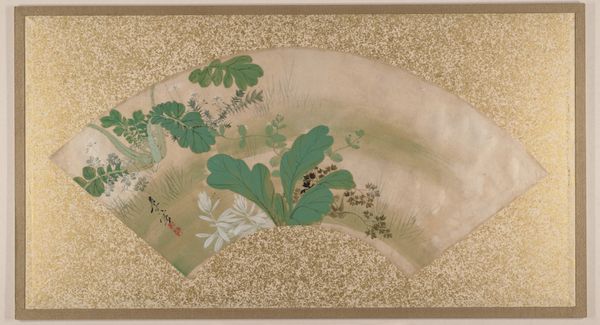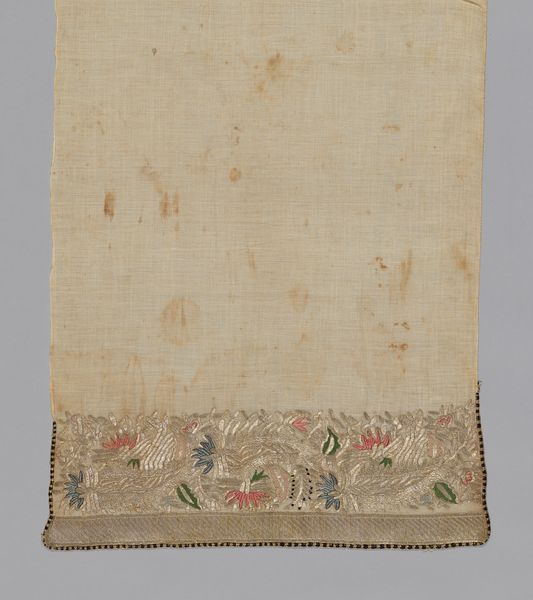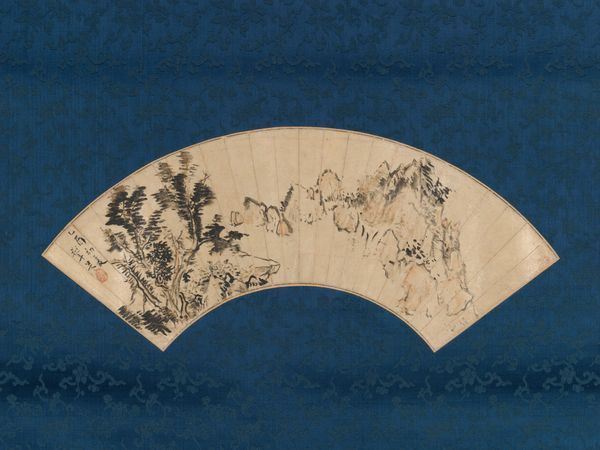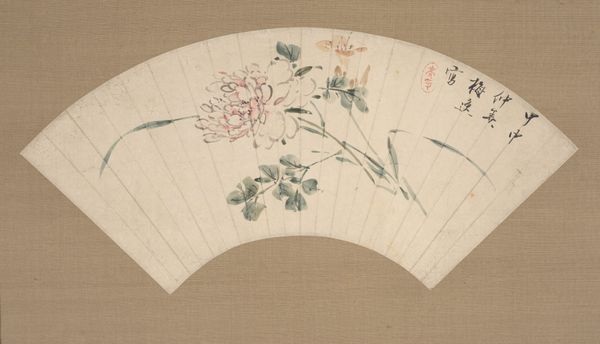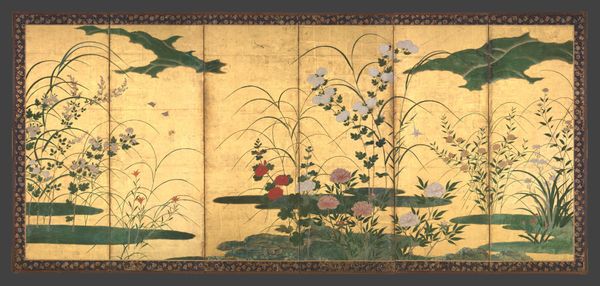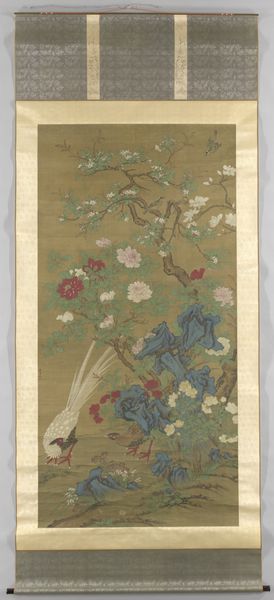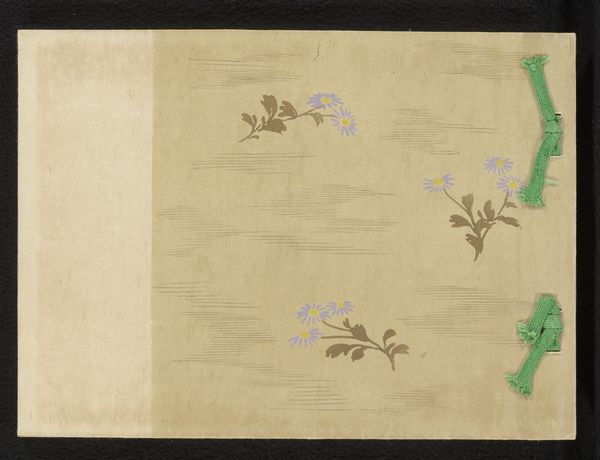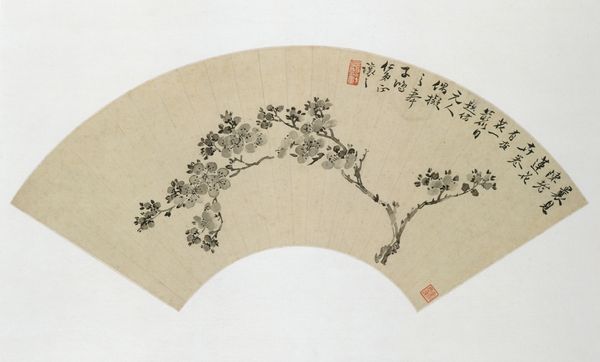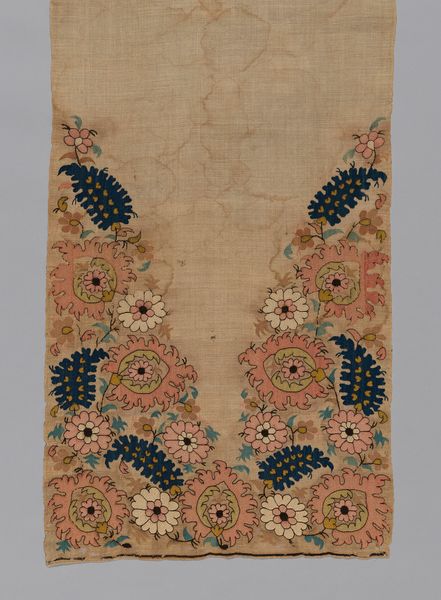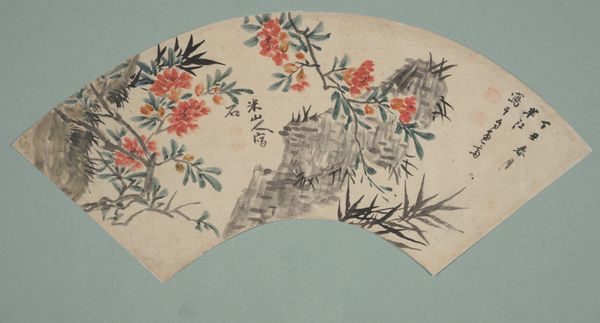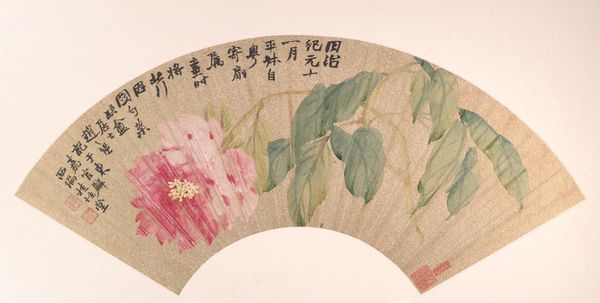
painting
#
painting
#
asian-art
#
japan
#
plant
Dimensions: 6 3/4 x 20 3/4 in. (17.2 x 52.7 cm)
Copyright: Public Domain
Ogata Kōrin rendered this painting of wisteria on a fan in Japan, sometime between the 17th and 18th centuries. The wisteria, with its cascading blossoms, symbolizes love, sensitivity, and happiness in Japanese culture, often linked with feminine beauty and grace. But let us trace this motif across cultures. Think of the vine, a recurring emblem of connection, seen in classical Roman art as Bacchus's ivy, or the Tree of Life found in various mythologies. Like the wisteria, these symbols speak of growth, interconnectedness, and the cyclical nature of existence. There's a deep, almost primal appeal in these representations. Psychologically, the wisteria's tender beauty evokes a feeling of nostalgia, echoing the subconscious human connection to nature and its rhythms. It’s a poignant reminder of our shared, historical yearning for harmony and beauty. Observe how these symbols of intertwining and growth resurface, evolving through art. Like a dream that is endlessly reinterpreted, they capture the essence of the human experience across time.
Comments
No comments
Be the first to comment and join the conversation on the ultimate creative platform.
